Archive for June, 2017
Private Fleet Car Reviews: 2017 Holden Astra RS manual hatch
Holden’s move to bring in its range of vehicles from Europe has already paid off with the fully European sourced Astra. With an all turbocharged engine range, the 2017 Astra family, which starts at $23990 driveaway, offers power, performance, and plenty of tech, as A Wheel Thing drives the 2017 Holden Astra 1.6L RS manual. It’s the 1.6L four here, with an immensely handy 280 torques between 1650 to 3500 revs and rolls off to the 147 kW peak output at 5500. So far it’s a numbers game, including six, six being how many forward ratios in the manual transmission supplied. It’s a delight, this transmission, with a beautifully progressive clutch pedal and a pickup point that feels natural. The gear selector is also well weighted, with no indecision in the close throw and tautly sprung lever. Reverse is across to the left and up, easily selected by a pistol grip trigger on the selecter’s front. It’s a delightfully refined package, one worth investigating, and a prime reason why we should move away from automatics as our primary transmission. Economy? A Wheel Thing finished on a sub 7.0L per 100L of 95 RON from the 48 litre tank.
It’s the 1.6L four here, with an immensely handy 280 torques between 1650 to 3500 revs and rolls off to the 147 kW peak output at 5500. So far it’s a numbers game, including six, six being how many forward ratios in the manual transmission supplied. It’s a delight, this transmission, with a beautifully progressive clutch pedal and a pickup point that feels natural. The gear selector is also well weighted, with no indecision in the close throw and tautly sprung lever. Reverse is across to the left and up, easily selected by a pistol grip trigger on the selecter’s front. It’s a delightfully refined package, one worth investigating, and a prime reason why we should move away from automatics as our primary transmission. Economy? A Wheel Thing finished on a sub 7.0L per 100L of 95 RON from the 48 litre tank. It’s a sweet looking machine too. A sharp yet slimline nose, with striking silver accents, rolls into a steeply raked front window, with good side vision before finishing with a somewhat odd looking C pillar design incorporating a pyramidical motif. There’s a black sheet between this and the roofline and there’s further eyeball catching with the deep scallops in the doors. Beautifully styled tail lights finish off what really is a handsome vehicle.
It’s a sweet looking machine too. A sharp yet slimline nose, with striking silver accents, rolls into a steeply raked front window, with good side vision before finishing with a somewhat odd looking C pillar design incorporating a pyramidical motif. There’s a black sheet between this and the roofline and there’s further eyeball catching with the deep scallops in the doors. Beautifully styled tail lights finish off what really is a handsome vehicle.  Inside you’ll find a well sculpted office. There’s piano black highlights that contrast with charcoal grey black plastic and cloth trim on the seats in a checkerboard pattern. The dash design itself is organic, flowing, and evokes the design ethos of higher end luxury cars. The pews front and rear are wonderfully supportive and have just the right amount of give and bolstering. Rear seat passengers get enough leg room for comfort also and there’s no problem with head room for front or rear with 1003 mm and 971 mm respectively.
Inside you’ll find a well sculpted office. There’s piano black highlights that contrast with charcoal grey black plastic and cloth trim on the seats in a checkerboard pattern. The dash design itself is organic, flowing, and evokes the design ethos of higher end luxury cars. The pews front and rear are wonderfully supportive and have just the right amount of give and bolstering. Rear seat passengers get enough leg room for comfort also and there’s no problem with head room for front or rear with 1003 mm and 971 mm respectively.  The driver and passenger do not get electric seats, though, however there is DAB for the high quality audio system that’s part of the GM family’s MyLink set. There’s Apple CarPlay and Android Auto compatibility along with streaming apps. For those that like to carry kids and shopping, there’s 360L pf cargo space with the seats folded up, cupholders front and rear, USB charger point, seatback pockets, and door pockets as well.
The driver and passenger do not get electric seats, though, however there is DAB for the high quality audio system that’s part of the GM family’s MyLink set. There’s Apple CarPlay and Android Auto compatibility along with streaming apps. For those that like to carry kids and shopping, there’s 360L pf cargo space with the seats folded up, cupholders front and rear, USB charger point, seatback pockets, and door pockets as well. The driver and passenger do not get electric seats, though as they’re reserved for the RS-V, however there is DAB for the high quality audio system that’s part of the GM family’s MyLink set. There’s Apple CarPlay and Android Auto compatibility along with streaming apps and the leather clad tiller has audio and cruise controls that are pure GM in their ease of use. For those that like to carry kids and shopping, there’s 360L pf cargo space with the seats folded up, cupholders front and rear, USB charger point, seatback pockets, and door pockets as well.
The driver and passenger do not get electric seats, though as they’re reserved for the RS-V, however there is DAB for the high quality audio system that’s part of the GM family’s MyLink set. There’s Apple CarPlay and Android Auto compatibility along with streaming apps and the leather clad tiller has audio and cruise controls that are pure GM in their ease of use. For those that like to carry kids and shopping, there’s 360L pf cargo space with the seats folded up, cupholders front and rear, USB charger point, seatback pockets, and door pockets as well. It’s its road manners and driveability where the Astra RS really shines. The six speed manual is fluid, smooth, and completely complements the torque delivery of the 1.6L powerplant. What makes the Astra RS a delight to drive is the beautifully balanced suspension. It really is one of the best ride packages you’ll find. Period. The suppleness of the suspension is deft in its ability to change with road surface changes, whilst it firms up to provide a sporting feel when required. Rubber is from France, with lightning bolt 17 inch alloys wrapped in Michelin 225/45 tyres.
It’s its road manners and driveability where the Astra RS really shines. The six speed manual is fluid, smooth, and completely complements the torque delivery of the 1.6L powerplant. What makes the Astra RS a delight to drive is the beautifully balanced suspension. It really is one of the best ride packages you’ll find. Period. The suppleness of the suspension is deft in its ability to change with road surface changes, whilst it firms up to provide a sporting feel when required. Rubber is from France, with lightning bolt 17 inch alloys wrapped in Michelin 225/45 tyres. From smooth freeway surfaces such as those found in western Sydney where some areas have been freshly resurfaced, to gravelled and rutted entrance roads, the Astra RS feels comfortable and poised across these and every surface in between. Thrown into off camber turns the hatch sits flat and under control and rarely does the rear end feel as if it’s not attached to the front. The steering itself is weighted just so, with a fine balance of effort versus connection to the front. There’s a bare hint of understeer being a front wheel drive car and while hint ar torque steer when the go pedal is given a hard push from standstill.
From smooth freeway surfaces such as those found in western Sydney where some areas have been freshly resurfaced, to gravelled and rutted entrance roads, the Astra RS feels comfortable and poised across these and every surface in between. Thrown into off camber turns the hatch sits flat and under control and rarely does the rear end feel as if it’s not attached to the front. The steering itself is weighted just so, with a fine balance of effort versus connection to the front. There’s a bare hint of understeer being a front wheel drive car and while hint ar torque steer when the go pedal is given a hard push from standstill. Holden will give you a three year or one hundred thousand kilometre warranty, which, given the levels of warranty offered by others is starting to look a little dated. However they do offer Lifetime Capped Price Servicing plus you can take the car for a twenty four hour test drive to make up your own mind. Yes, you’ll find driver aids on board and the RS gets Automatic Emergency Braking in the suite of aids.
Holden will give you a three year or one hundred thousand kilometre warranty, which, given the levels of warranty offered by others is starting to look a little dated. However they do offer Lifetime Capped Price Servicing plus you can take the car for a twenty four hour test drive to make up your own mind. Yes, you’ll find driver aids on board and the RS gets Automatic Emergency Braking in the suite of aids.
At The End Of The Drive.
The RS Astra, priced in the mid twenty thousand dollar range, is perhaps one of the most complete packages you can buy as a driver’s car. A torquey engine, a slick manual transmission, a comfortable office and with enough tech on board for emjoyment and safety, plus a beautifully tuned chassis add up to provide one of the most pleasureable drive experiences available. And that price makes it a competitive package in regards to value as well. Go here to check it out plus look at the new sedan: 2017 Holden Astra hatch range
Private Fleet Car Review: 2017 Holden Trax LS Turbo
Holden has a history of importing small cars for SUV style duties. Suzuki gave us the Drover, Isuzu the Jackeroo and a jacked up Barina became the Trax. A refresh to the car has been performed, with noticeable changes inside and out. The 2017 Holden Trax LS spends a week in the urban jungle. Up front is the 1.4L turbo four that once resided in the Cruze. In that car, even with an auto, it was lively, peppy, zippy. Not so in the LS auto. Holden have released the LS with the 1.8L engine and manual or the turbo four and auto only. Even with 200 torques at 1850 rpm it’s pulling close to 1400 kilos and felt as if the gear ratios were holding the little SUV back. When punched hard and under way, the performance characteristics did change…having said that, the auto had an unusual and odd whine, one not out of place in a manual transmission that wasn’t calibrated correctly.
Up front is the 1.4L turbo four that once resided in the Cruze. In that car, even with an auto, it was lively, peppy, zippy. Not so in the LS auto. Holden have released the LS with the 1.8L engine and manual or the turbo four and auto only. Even with 200 torques at 1850 rpm it’s pulling close to 1400 kilos and felt as if the gear ratios were holding the little SUV back. When punched hard and under way, the performance characteristics did change…having said that, the auto had an unusual and odd whine, one not out of place in a manual transmission that wasn’t calibrated correctly. The turbo four drinks 95 RON as its preferred tipple and will do so at 6.9L per 100 km (quoted,combined) from a tank weighing in at 53 litres. That’s pretty much on the money in the week A Wheel Thing had the petite LS Trax however that’s the combined figure. Given this kind of car will be in short distance, stop start, style of travel, figure on something closer to 8.0L/100 km.
The turbo four drinks 95 RON as its preferred tipple and will do so at 6.9L per 100 km (quoted,combined) from a tank weighing in at 53 litres. That’s pretty much on the money in the week A Wheel Thing had the petite LS Trax however that’s the combined figure. Given this kind of car will be in short distance, stop start, style of travel, figure on something closer to 8.0L/100 km.
Ride quality is a mixed bag in the front wheel drive only Trax LS with a even and smooth feeling on freshly laid roads morphing into unsure and tentative on broken and rutted surfaces. There was even occasional mild bump steer and an odd sensation of the front MacPherson strut suspension’s settings not balancing the compound crank axle rear. Driving over the mildly broken surfaces of some local roads would have the front gently absorbing the irregularities and the rear would feel less tied down. All in all, just not a balanced mix. Handling was also a mixed bag with a numbness either side of centre of the tiller, a feeling of twitchiness in the communication from the steering wheel, and just hints of understeer from the Continental 205/70/16 rubber when pushed.
All in all, just not a balanced mix. Handling was also a mixed bag with a numbness either side of centre of the tiller, a feeling of twitchiness in the communication from the steering wheel, and just hints of understeer from the Continental 205/70/16 rubber when pushed.
The brakes were the same odd mix, with nothing but pedal pressure for what felt like an inch before a gentle bite, a too gentle bite at that. In order to get any sense of stopping power a harder shove was required and there was no sense of progression, rather a change from soft to grab hard, a most disconcerting sensation in high traffic. That’s perhaps due to the drum rears, not discs. It’s also apparently fitted with HSA, or Hill Start Assist, however even gentle slopes such as those found in undergroup car parks had the car rolling back once the foot was off the brake.
The transmission in the LS Turbo is, as mentioned, a six speed auto. It is fitted with a manual override, accessible via a simple toggle switch on the selector. This was invaluable in the climb up Sydney’s Old Bathurst Road, just west of Penrith, at the base of the Blue Mountains. In traffic, rather than the indecisive self selector, by using the manual it would more than happily crawl/walk/run uphill depending on the traffic gaps. It was quicker in changing gears doing this and came in handly also in overtaking. Brownie points, also, for the interior of the Trax. It’s an office come boys club in that it’s a comfortable place to be yet efficient in design and layout. It’s a traditional key in the right hand side of the column, standard GM switchgear, all blended into a smooth, flowing, organically styled dash with the pews comfy and providing plenty of lateral support.
Brownie points, also, for the interior of the Trax. It’s an office come boys club in that it’s a comfortable place to be yet efficient in design and layout. It’s a traditional key in the right hand side of the column, standard GM switchgear, all blended into a smooth, flowing, organically styled dash with the pews comfy and providing plenty of lateral support. There’s the MyLink system on board and housed in a seven inch touchscreen which includes phone projection which is Apple CarPlay and Android Auto, but the LS misses out on DAB as the entry level model in the three model range. There’s an LCD screen in the dash binnacle which also houses analogue dials, appropriate for an entry level vehicle.
There’s the MyLink system on board and housed in a seven inch touchscreen which includes phone projection which is Apple CarPlay and Android Auto, but the LS misses out on DAB as the entry level model in the three model range. There’s an LCD screen in the dash binnacle which also houses analogue dials, appropriate for an entry level vehicle. There’s also Bluetooth streaming, USB and Auxiliary inputs but the death of the car-based CD player was also on show, with no slot to slip the silver disc in. A point off, though, for the design of the tiller, as the centrepoint is above the horizontal centreline which makes for an uncomfortable 11 and 1 hand position. Storage wise you’re looked after with a tray under the passenger seat, door pockets, good sized cup holders and sunglasses holder.
There’s also Bluetooth streaming, USB and Auxiliary inputs but the death of the car-based CD player was also on show, with no slot to slip the silver disc in. A point off, though, for the design of the tiller, as the centrepoint is above the horizontal centreline which makes for an uncomfortable 11 and 1 hand position. Storage wise you’re looked after with a tray under the passenger seat, door pockets, good sized cup holders and sunglasses holder. There’s good rear legroom at 908 mm, headroom at 985 mm, and shoulder room is good for two adults at 1340 mm. This is inside a petite 4257 mm overall length yet packing a 2555 mm wheelbase. This means the corners are pushed out into the pumped out guards and sees the otherwise somewhat dumpy looking five door seem a touch larger than what the dimensions suggest. The height has a bit to do with it, being an inch shy of 1700 mm.
There’s good rear legroom at 908 mm, headroom at 985 mm, and shoulder room is good for two adults at 1340 mm. This is inside a petite 4257 mm overall length yet packing a 2555 mm wheelbase. This means the corners are pushed out into the pumped out guards and sees the otherwise somewhat dumpy looking five door seem a touch larger than what the dimensions suggest. The height has a bit to do with it, being an inch shy of 1700 mm.
 Otherwise, you’re looking at a redeveloped nose, bringing the Trax into line looks wise with the Colorado and Captiva, with the flattened six sided lower air intake under the single bar upper. There’s LED driving lights but no halogens in the lower quarters. The rear is less made over, with the family resemblance to big sibling Captiva perhaps more slightly enhanced and hides a 356/785 litre cargo capacity accessed by an easy to open and lift tailgate. Naturally there’s a camera for reversing and it provides a crisp and clear picture on the screen.
Otherwise, you’re looking at a redeveloped nose, bringing the Trax into line looks wise with the Colorado and Captiva, with the flattened six sided lower air intake under the single bar upper. There’s LED driving lights but no halogens in the lower quarters. The rear is less made over, with the family resemblance to big sibling Captiva perhaps more slightly enhanced and hides a 356/785 litre cargo capacity accessed by an easy to open and lift tailgate. Naturally there’s a camera for reversing and it provides a crisp and clear picture on the screen. There’s six airbags, the now mandatory safety aids under the skin, pretensioning seatbelts, collapsible pedals, plus Holden’s standard three year or one hundred thousand kilometre warranty. Reverse sensors partner with the aforementioned camera to complete the package. At the time of writing, the first four services will cost you $229 each at intervals of one-year or 15,000km, a fair ask for peace of mind and for budget conscious buyers.
There’s six airbags, the now mandatory safety aids under the skin, pretensioning seatbelts, collapsible pedals, plus Holden’s standard three year or one hundred thousand kilometre warranty. Reverse sensors partner with the aforementioned camera to complete the package. At the time of writing, the first four services will cost you $229 each at intervals of one-year or 15,000km, a fair ask for peace of mind and for budget conscious buyers. At The End Of The Drive.
At The End Of The Drive.
The LS Trax with turbo four and six speed auto was, at best, competent in this particular vehicle. Performance was somewhat lacklustre until pushed and that transmission whine was a worry. It does though look smooth and organic inside and offers enough usable room for four adults. At around $25K driveaway it’s not a budget breaker either however. For details and to book a test drive to make up your own mind, go here:2017 Holden Trax range
New Vehicles from Mainland Asia, A Growth Sector
Currently, mainland Asia is a big pool of innovation and design, particularly, in car manufacturing. Design teams beaver away at creating fun new designs, shapes and technologies. The result of all this activity is the production of sharp-looking new vehicles appearing from South Korea, Malaysia and China, and in Australia we are benefiting from these excellent new car products that are competitively priced, well designed and built to a high standard. Some Australian new-car buyers are recognising the value in buying a vehicle from South Korea, China and Malaysia, so it’s a great time to be a car buyer, not to mention a car enthusiast spoilt for choice.
Models from China
China is the biggest country in Asia, and we’re starting to get familiar with Chery, Great Wall Motors, Foton and Haval model names. Great Wall and Foton make a nice range of low cost utes and pick-up trucks that can be either 2WD or 4WD.
With a grunty 2.8-litre turbo-diesel that has been designed by Cummins, the Foton Tunland models impress with smooth power and efficiency. Inside, the Tunland is comfortable and well equipped. Foton Tunland Utes come with a 3 year/100,000 km warranty making the new buy even sweeter.
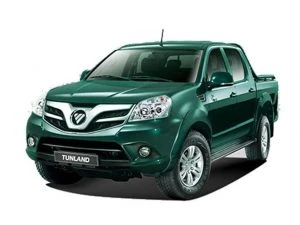
Foton Tunland
With an imposing stance, the new Great Wall Steed ute is a strong performer. Diesel, petrol, 2WD and 4WD options make this a versatile and useful addition to your working fleet. Equipped with all the modern safety features, the Great Wall Steed ute is set to impress.
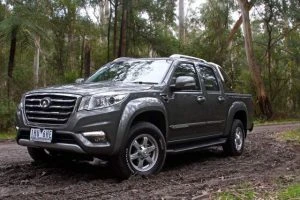
Great Wall Steed
Low cost Chery cars are easy to live with, and are principally popular to those who are on a slight budget. Chery J1 offers a small car in a neat package. Chery J3 cars are a little larger and offer comfortable space in the form of a small hatchback. The Chery J11 SUV offers superior value for money and a full three year/100,000 kilometre warranty.
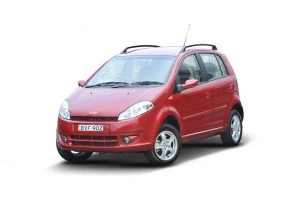
Chery J1
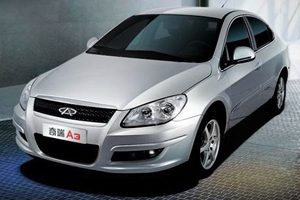
Chery J3
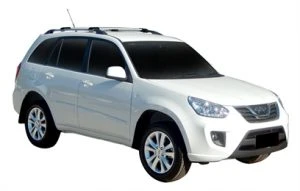
Chery J11
Little known in Australia, but hugely popular in other parts of the world, are vehicles from Haval. Haval is the newest SUV player in the Australian SUV market, coming to these shores after dominating the Chinese SUV market for the best part of 10 years. Haval is an offshoot of Great Wall, much in the same way that Lexus is an offshoot of Toyota, FPV is an offshoot of Ford and Arbarth is an offshoot of Mini. However, Haval specialises in SUVs only, and you won’t find any other type of vehicle wearing the Haval badge. They may come in different sizes, but they’re all SUVs. What’s more, Haval makes classy SUVs – vehicles that combine serious off-roading ability with precision engineering and style.
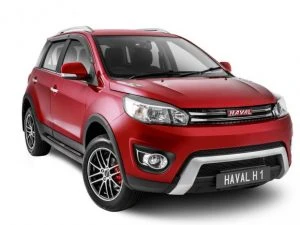
Haval H1
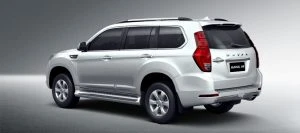
Haval H9
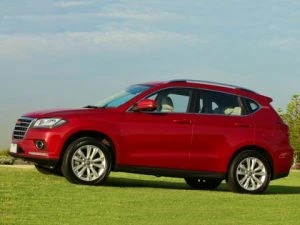
Haval H2
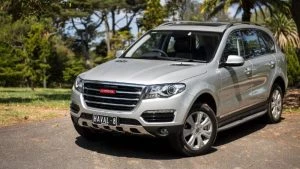
Haval H6
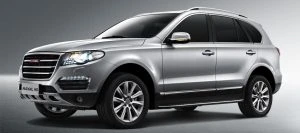
Haval H8
While parent company Great Wall tends towards producing reliable no-frills vehicles, Haval throws in a lot more bells and whistles, plus extra luxury – while still keeping the price towards the lower end. In creating these vehicles, the Haval design team has benefited from the knowledge and flair of the former head of the BMW design team, Pierre LeClerq. Haval vehicles are firstly practical and secondly beautiful.
Models from Malaysia
Proton is Malaysia’s national new-car producer. Having produced cars since the early eighties, Proton, in the last decade, has really kicked on to produce some excellent new models that are well-built and modern competing directly with the best low-cost models the world over.
Proton’s Suprima is a stylish small hatch with six airbags, reverse sensors, Bluetooth, iPod connectivity, steering wheel audio and telephone controls, and a sprightly 1.6-litre turbo engine. The car has five-star ANCAP safety and a five year warranty.
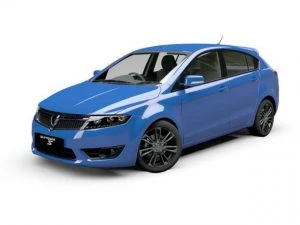
Proton Suprima
Proton’s new Preve is a saloon version of the Suprima and has a responsive naturally aspirated 1.6-litre petrol engine with 80 kW of power and 150 Nm of torque. A large boot, good legroom and comfortable seats make the Preve a great buy for those on a budget. Again five-star safety and a five-year warranty sets up an attractive package that asks well under $20k.
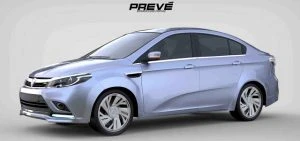
Proton Preve
Proton’s Exora is a well thought-out seven-seater wagon that has the family in mind with a DVD player available, MP3 connectivity, Bluetooth, cupholders, plenty of room and air vents for each row of seats. A four-star ANCAP safety test result with a five-year warranty sets this new model apart.
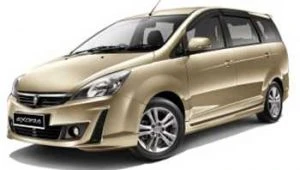
Proton Exora
Models from South Korea
Currently boasting the fifth largest automotive industry in the world, South Korea has some superb new models that have grown in popularity throughout the world almost as fast as PSY’s viral “Gangnam Style” video. The three main car manufacturing names we’ve all heard about are Kia, Ssangyong and Hyundai. Both Kia and Hyundai have some of the sharpest modern design teams in the business, and Ssangyong continues to offer some very good utility and SUV type vehicles.
Kia produces some nicely designed cars for the small-to-large car buyer. People movers are available, while the Sorento and Sportage are really popular SUV models. High-end models are very well equipped, safe and capable vehicles with loads of style. Watch out for the new Kia Stinger with its fastback styling and sleek lines. Longer and wider than a BMW 4 Gran Coupe and boasting a longer wheelbase than the Lexus GS, the Stinger means business and ensures you will have a commanding presence on the road. A twin-turbo V6 motor puts out around 270 kW and is matched to a slick eight-speed auto gearbox. The RWD chassis delivers exhilarating road holding and will be a delight to drive. There will be a 2.0-litre turbo performance model available as well.
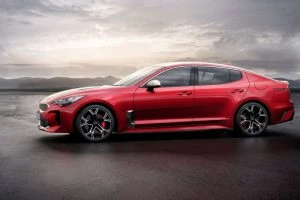
Kia Stinger
Hyundai, like Kia, offer very stylish vehicles that cater for all shapes and sizes, purposes and performance. Hyundai are pushing the boundaries in the fields of styling and safety, and with solid engines and drivetrains these are a sound new-car buy. Hyundai’s latest Genesis is a luxury car that competes very well with the best of European luxury cars. Tucson and Santa Fe models are exceptionally popular SUVs, while Hyundai know how to make a stylish and practical large work van or people mover – known as the iLoad and iMax respectively. Watch out for the latest i30, promising clean lines and even more performance.
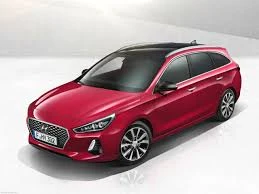
Hyundai i30
Sadly, Ssangyong has declined in sales across Australia, though the fashionable brand of SUVs and utes are sure to make a come-back in late 2017 with SsangYong marketing the new Y400 large SUV, based on the LIV-2 concept revealed at the recent Paris motor show, and the Tivoli compact crossover. The Tivoli is a compact SUV with nice lines and excellent features. With around 95 kW of power, the 1.6-litre petrol engine is powerful and efficient, while torque peaks at 160 Nm. Korean crash testing has given the new Tivoli a five-star rating.
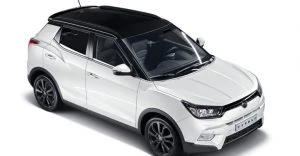
Ssangyong Tivoli
The new Y400 is a big Ssangyong Rexton SUV replacement that offers strong diesel turbo power and efficiency with loads of seating comfort and space. And, if you need a stylish new ute for work and recreation, the Actyon Sport ute is a tough unit with good looks and plenty of power.

Ssangyong Rexton Y400
Here in Australia we’re going to see more cars from Mainland Asia driving on our roads. Embracing the changing automotive landscape includes accepting the attractive Hyundai, Kia and Ssangyong drives. They’re great cars that are really well designed and competitively priced